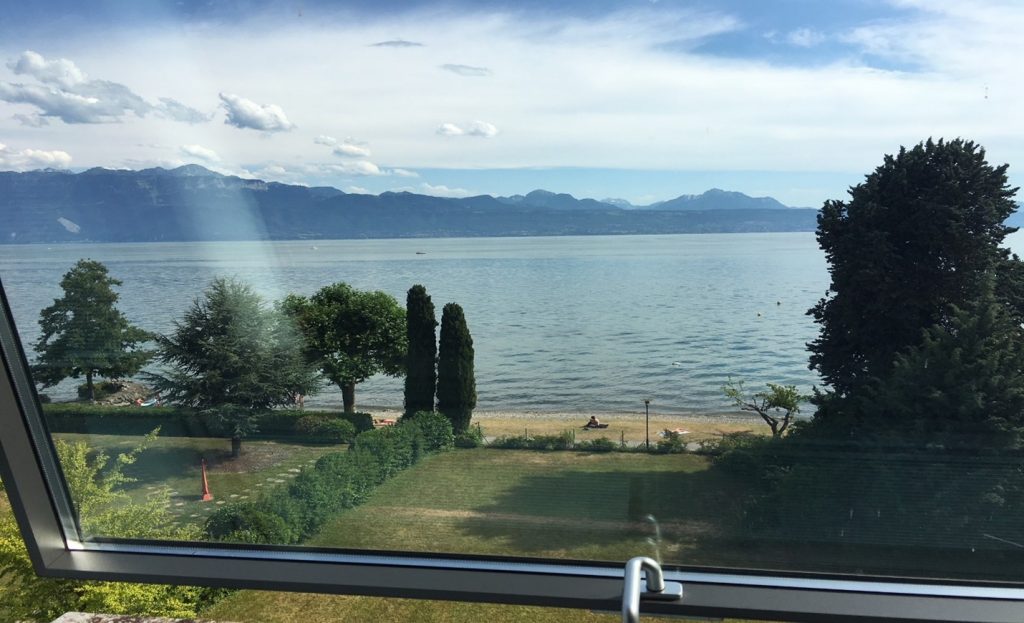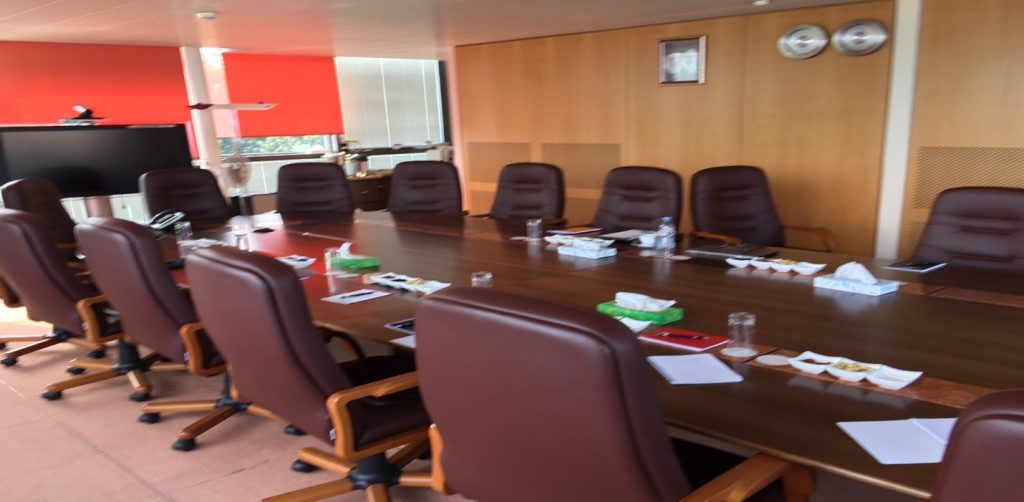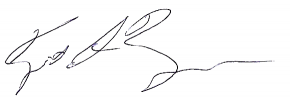

Date: 10/21/2020
Author: Kent Moors, Ph.D.
As you read this, I am winding down another day of exhausting shuttling between discussion locations in Lausanne, Switzerland. The reason I am here was outlined in the last issue of Classified Intelligence Brief. On the one side are parties, primarily from the Continental financial and policy world, interested in determining a possible route for investments (preferably energy-related) into a tense Persian Gulf region. On the other side are the Iranians intent on holding somebody (preferably Americans) responsible for their current economic collapse amidst the renewal of sanctions.
We made some preliminary progress in the first set of meetings held at the Lausanne Palace hotel. After that, my responsibilities then moved on to the Iranians.
As I noted last time, the Iranian meetings are held separately from the sessions involving the Europeans. Now nobody in such heavily restricted meetings ever gets photographed for public view. But my cell phone managed to provide you some small flavor of the meetings when our conference room was empty.
With the Iranians, I have been ensconced in meetings while enjoying this view of Lake Geneva:


From this conference room at the main Iranian trading entity NICO (Naftiran Intertrade Co.) headquartered in Pully, just outside Lausanne:


The objective from the onset has been to establish a framework for focused negotiations on energy investment parameters and security matters to take place this Friday and Saturday in Abu Dhabi (the capital of the United Arab Emirates) and Doha (the capital of Qatar).
That this must be in two locations is itself a statement of the times.
The two cities are separated by what should be a very short flight. But regional politics dictates a more circuitous route. That’s because several years ago Saudi Arabia and the UAE (along with Egypt) cut connections with Qatar over its alleged support for Iran and terrorism (the latter categorically denied by the Qataris). As a result, there is no way to travel directly between the two countries.
If I fly commercially and want to avoid wasting more than 24 hours traveling back to Paris or some other European hub to pick up a Qatar Airways flight into Doha, there are only a few alternatives. I either fly through Kuwait City, or Amman (Jordan), or Beirut (Lebanon, no thanks done that already), or Muscat (Oman) on regional “puddle hoppers.” That still takes 10-15 hours.
Since we have a private Gulfstream V on this trip, it will cut down the delays. But this will still cost me at least six hours to travel less than 350 miles. Yet there is no alternative. Iranians cannot come to Abu Dhabi (a separate diplomatic stalemate) but they can travel to Doha.
Once again, I will be moving between meetings of distinct parties who cannot (or will not) end up in the same room.
The travel logistics are another reminder of the problems that remain endemic to the Persian Gulf. Nonetheless, this entire week may provide a provisional road map for a win-win route through a tension filled regional mine field, a path that will require more meetings down the line.
One step at a time.
It is premature for me to let you in on what the discussions have revealed. To the extent possible, I will do so when back in the States sometime next week. There should be encouraging ways for Main Street investors to profit on the margins of actions by other large operators.
Already, I have released to Sigma Surges subscribers investment moves gained from what contacts have told me about how major European players are financing oil futures contracts. There should be more forthcoming.
However, it is the regional security environment that has taken up most of the oxygen in the meeting rooms here. And it has been gravitating about the threshold situation I mentioned last time in CIB.
A seminal matter is widely acknowledged by the discussants. Despite having spent billions on high end military hardware from the US, France, and elsewhere, Riyadh cannot defend its own oil infrastructure.
There is a basic reason for this, and it is hardly unique to Saudi Arabia. I have experienced it arising repeatedly for more than forty years.
Established nations seem intent on defending against the last war, acquiring the biggest, shiniest, most expensive armaments to do so, thereby opening themselves up to attack from “below the threshold.”
I have experienced this firsthand. The concept is one honed during my tenure as an intelligence officer and applied beginning in the unsettling closing period of US involvement in Vietnam. To understand the idea, you need to have some background and be introduced to one of the more colorful people I have known.
Now much of the Vietnam conflict was a process of learning how the other side fought. We went in to fight a brief police action of sorts with the wrong attitude and the wrong arsenal, impatient to get the whole thing done before the next election back home.
Those having the military upper hand, as an early mentor of mine noted, “never feel comfortable fighting for less than the maximum of objectives with less than the maximum of fire power available.” In Vietnam, that resulted in our carrier task forces offshore, bombers at 40,000 feet, enough napalm to incinerate a country several times over, and sophisticated aircraft.
All against an adversary using tunnels and paths through the bush.
The object was to get them to cry “uncle.” Yet it turns out the other guy had been fighting superior firepower of one sort or another for centuries. They had a different mindset.
All of this was immortalized by one of the more curious figures in the war who probably contributed more to developing “the threshold” concept than anybody I ever knew. Our paths crossed as I was starting out and he was preparing to leave (with a bang, as it turns out).
You need to know something about this fellow. Sam Adams was a direct descendent of the John Adams who became president and the Sam Adams who, in addition to setting a revolutionary standard in his own right, is known to most these day as a great Boston lager.
A graduate of both Harvard College and Harvard Law, Sam was a Wall Street lawyer for a bit until finding a true calling. He entered the CIA in 1963.
A brilliant mind, Sam could also be a pain in the ass. Sometimes the posterior was his; more often it was attached to somebody else.
Despite riding a desk at Langley for much of his carrier, Sam became far and away the best analyst of the Viet Cong and of our fundamental inability to understand how they thought and operated. His book Who the Hell Are We Fighting? remains the best study to emerge from a bitterly divisive war.
That book really described two wars. The first was fought on the ground against an indigenous enemy we knew little about. The second conflict was internecine, inside the US intelligence community itself.
Personally, I survived both by a combination of using my mission parameters largely to ignore the chain of command, blind luck, and misreading a map. But all of that is the subject of another story, one I may someday tell.
Sam gave my detailed preoperational briefings stateside before I went in theater and debriefed me outside Tokyo once I returned. Both were the best I ever experienced.
Before he died in 1988, Sam had redefined “the threshold.” He also created a firestorm in the process.
Sam left the Agency in 1975. He testified before Congressional committees in what became known as the “order of battle” controversy. This involved Sam’s exhaustive argument claiming the US government and intel community had deliberately underestimated the strength of the enemy, derided the underlying VC support within the population, and distorted body counts for political purposes. This brought the ire of the CIA, MACV (Military Assistance Command, Vietnam), and some very heavy hitters.
But Sam was just revving up. He appeared as a defense witness for Daniel Ellsberg and Anthony Russo in the Pentagon Papers case, and then brought whistleblowing to a whole new level.
Sam pilfered documents out of the CIA, buried them on his farm in northern Virginia, and then leaked them to CBS. The result was the January 1982 TV bombshell The Uncounted Enemy: A Vietnam Deception.
Based on Sam’s work, the CBS documentary claimed that high US officers, including overall commander General William Westmoreland, had manipulated intelligence reports and deliberately underestimated VC strength.
Westmoreland sued CBS…and Sam. The general ultimately withdrew the suit in 1985.


Sam outside courthouse in 1984 Photo: Steerforth Press
Fourteen years after his death, the Sam Adams Award was created. It is given annually by an independent group founded by Ray McGovern (another former CIA high-profile activist) to an intelligence professional who has taken a stand for integrity and ethics. This has been a politically charged award at times. Former winners include Julian Assange, Chelsea Manning, and Edward Snowden.
But back to the threshold.
There always develops a level below which a military power cannot effectively utilize its favored or primary weapons. That includes how a power thinks strategically. Under that threshold emerge calculated low intensity attacks for specific, limited effect. In the process, the “big boy” cannot effectively respond without escalating the conflict and thereby running the risk of sucking in additional participants.
This is the situation facing both Saudi Arabia and the US. Neither can attack Iran directly and must be careful not to compel Israel to enter the fray in any overt way. Should that occur, this becomes at least a region wide battle with risk calculations radically altered. Neither Moscow nor Beijing could afford to remain on the sidelines.
As this unsettled mosaic moves, the impact on the energy markets clearly moves as well. As is always the case in such circumstances, new opportunities emerge. Some of this will become clearer as my travels continue and I again confer with players and advisors who set the stage.
My life may be unsettling. But it sure is never dull.
Next time I will be talking with you from the Persian Gulf.


Dr. Kent Moors
This is an installment of Classified Intelligence Brief, your guide to what’s really happening behind the headlines… and how to profit from it.
Dr. Kent Moors served the United States for 30 years as one of the most highly decorated intelligence operatives alive today (including THREE Presidential commendations). After moving through the inner circles of royalty, oligarchs, billionaires, and the uber-rich, he discovered some of the most important secrets regarding finance, geo-politics, and business. As a result, he built one of the most impressive rolodexes in the world. His insights and network of contacts took him from a Vietnam veteran to becoming one of the globe’s most sought after consultants, with clients including six of the largest energy companies and the United States government.
Now, Dr. Moors is sharing his proprietary research every week… knowledge filtered through his decades as an internationally recognized professor and scholar, intelligence operative, business consultant, investor, and geo-political “troubleshooter.”
This publication is designed to give you an insider’s view of what is really happening on the geo-political stage. You can sign up for FREE to Classified Intelligence Brief and begin receiving insights from Dr. Moors and his team immediately.
Just click here – https://classifiedintelligencebrief.com/






